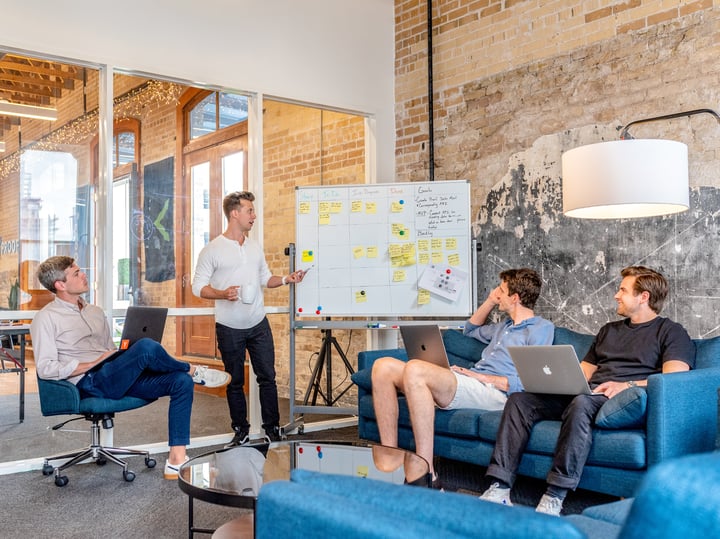Having experienced the numerous benefits of working from home for both employees and employers, it's no surprise that many companies are looking to adopt a hybrid way of working permanently.
Hybrid working is the best of both worlds. Combining the undeniable benefits of working from home — like the lack of commute and increased productivity — with the much-needed occasional live meetings is the way of the future. Not only is the flexibility pivotal in attracting and retaining talented personnel, but embracing hybrid working also means that you can do much more with the same or less office space. 
But don’t just impose a schedule for on-site work, eliminate half of your desks and call it a day! A smooth transition to hybrid working requires a strategic approach. Here’s how to make sure that your office real estate is ready to reap the benefits of combining remote and on-site work.
It may be tempting to impose a one-size-fits-all planning for on-site and home working days, but keep in mind that the main advantage of hybrid working is its flexibility. So don’t let a rigid policy kill that benefit! Instead, talk to the different teams and find out what they need.
Some teams may prefer coming to the office only for meetings, while some people choose to come to the office specifically to escape distractions at home.
Also consider how the office days are scheduled: is the planning the same every week or do you opt for a tool that allows colleagues to adapt their planning on a weekly basis?
Gathering data is an important step to gaining more insights. But instead of making broad generalizations, rather follow an agile and granular approach that keeps into account the varying needs across different buildings, team dynamics, and cultural differences. Doing so allows you to make decisions about sharing and re-allocating resources in a customized and adaptable manner, and optimize your office space accordingly.
Efficiency isn’t the only argument for prioritizing data-driven insights. By pinpointing where teams like to work, how much time they spend in different spaces, and with whom they collaborate, you can identify trends in the work styles and preferences of employees. These insights can be used to create the ideal workplace experience and improve productivity, employee engagement, and retention rates.
There are infinite ways to collect data, but the power of using a specialized analytics solution like Locatee, is that they are specifically designed to gather the most relevant data and extract meaningful insights about office usage, supporting the creation of customized workplace solutions.
Knowing how often employees will come to the office, consider if it still makes sense to keep assigned desks for everyone. Changing to fewer, flexible desks frees up extra space in your office. How are you going to use this to your advantage?
Based on employees’ needs, you could repurpose this space for an extra brainstorming room or install soundproof call booths to increase productivity. Or you might want to provide a silent room for optimal focus, and have a different area fully dedicated to sparking creativity.
Don't need all that space? Then you can even save on rent by moving to a smaller office space when your lease is up. There are endless possibilities, so don’t be afraid to ask for external help to make the decision that’s right for you.

The lack of a commute is a major reason why people love working from home, and they might be reluctant to get back on the road again. One way to encourage employees to come to the office is to make their travel as frictionless as possible.
With fewer people coming in on a daily basis, now is the perfect time to rethink your mobility and parking situation. Review or create a parking policy that meets your company’s current needs while anticipating your long term strategy, and discover how much more you can do with your existing parking spots.
You may even find that you can eliminate some car parking spaces or optimize your parking lot for other mobility forms - like a bicycle zone, or spots with charging stations for electric vehicles.
Either way, you can be sure that having a carefully designed, comprehensive parking solution will take your hybrid working policy to the next level!

Are you ready to use your parking lot to bring your hybrid working policy to the next level? Request a demo to discover how our smart software can help optimize your parking lot.